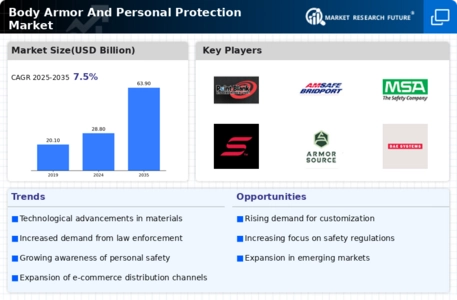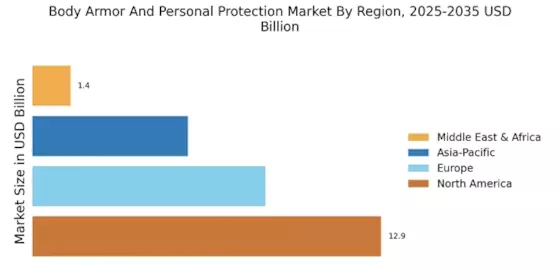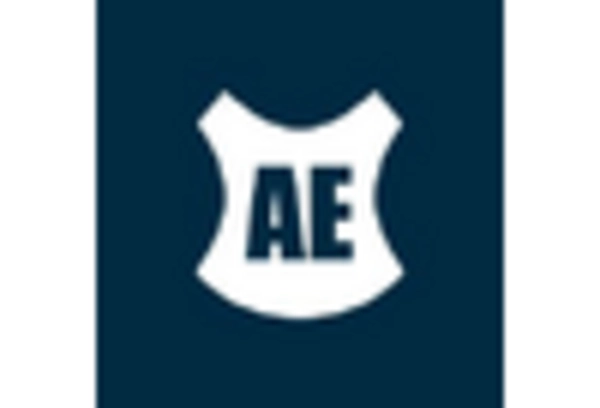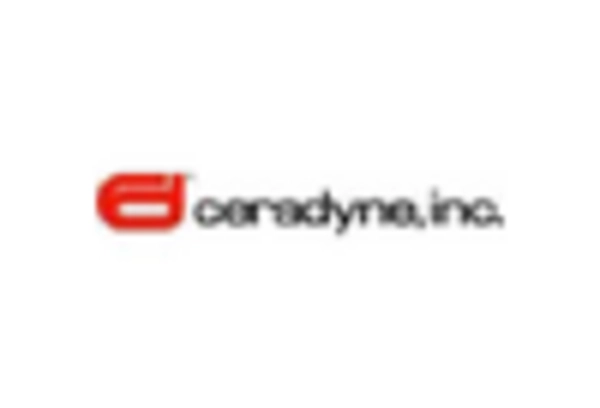Rising Security Concerns
The Body Armor And Personal Protection Market is experiencing a notable surge in demand due to escalating security concerns across various sectors. Heightened threats from terrorism, civil unrest, and violent crime have prompted both individuals and organizations to seek enhanced protective measures. According to recent data, the market is projected to grow at a compound annual growth rate of approximately 5.5% over the next five years. This growth is driven by the increasing awareness of personal safety and the necessity for protective gear in high-risk environments. As a result, manufacturers are innovating to provide advanced body armor solutions that meet the evolving needs of consumers. The emphasis on personal safety is likely to continue influencing purchasing decisions, thereby propelling the Body Armor And Personal Protection Market forward.
Evolving Threat Landscape
The evolving threat landscape is a critical factor influencing the Body Armor And Personal Protection Market. As threats become more sophisticated, the demand for advanced protective solutions is expected to rise correspondingly. The emergence of new forms of violence, including active shooter incidents and organized crime, necessitates the development of body armor that can withstand a variety of ballistic and non-ballistic threats. This dynamic environment compels manufacturers to innovate continuously, ensuring that their products meet the latest safety standards and consumer expectations. The market is likely to adapt to these changing threats, with projections indicating a potential market size of USD 5 billion by 2029. This adaptability will be essential for maintaining relevance in a rapidly changing security landscape.
Increased Civilian Demand
The Body Armor And Personal Protection Market is witnessing a significant increase in demand from civilian sectors. As personal safety concerns rise, more individuals are seeking protective gear for various activities, including outdoor sports, security jobs, and personal defense. This trend is particularly evident in urban areas where crime rates are perceived to be higher. The market for civilian body armor is projected to grow substantially, with estimates suggesting a potential increase of 6% annually over the next few years. This shift in consumer behavior indicates a broader acceptance of body armor among civilians, which could lead to a diversification of product offerings tailored to meet the specific needs of this demographic. Consequently, manufacturers are likely to expand their portfolios to include civilian-friendly designs and features.
Technological Innovations
Technological advancements play a pivotal role in shaping the Body Armor And Personal Protection Market. Innovations in materials science, such as the development of lightweight, flexible, and high-strength fabrics, have revolutionized body armor design. These advancements not only enhance the protective capabilities of armor but also improve comfort and mobility for users. For instance, the integration of smart technologies, such as sensors and communication devices, into personal protection gear is becoming increasingly prevalent. This trend is expected to drive market growth, as consumers seek products that offer both safety and functionality. The market is anticipated to witness a significant increase in the adoption of these advanced technologies, potentially leading to a market valuation exceeding USD 3 billion by 2028.
Government Initiatives and Funding
Government initiatives and funding are crucial drivers of the Body Armor And Personal Protection Market. Various governments are investing in the procurement of advanced protective gear for law enforcement and military personnel, recognizing the importance of equipping their forces with state-of-the-art body armor. This investment is not only aimed at enhancing the safety of personnel but also at improving operational efficiency in high-risk situations. Furthermore, regulatory frameworks that mandate the use of body armor in specific sectors are likely to bolster market growth. As governments continue to prioritize public safety and security, the demand for body armor is expected to rise, potentially leading to a market expansion that could reach USD 4 billion by 2027.


















Leave a Comment